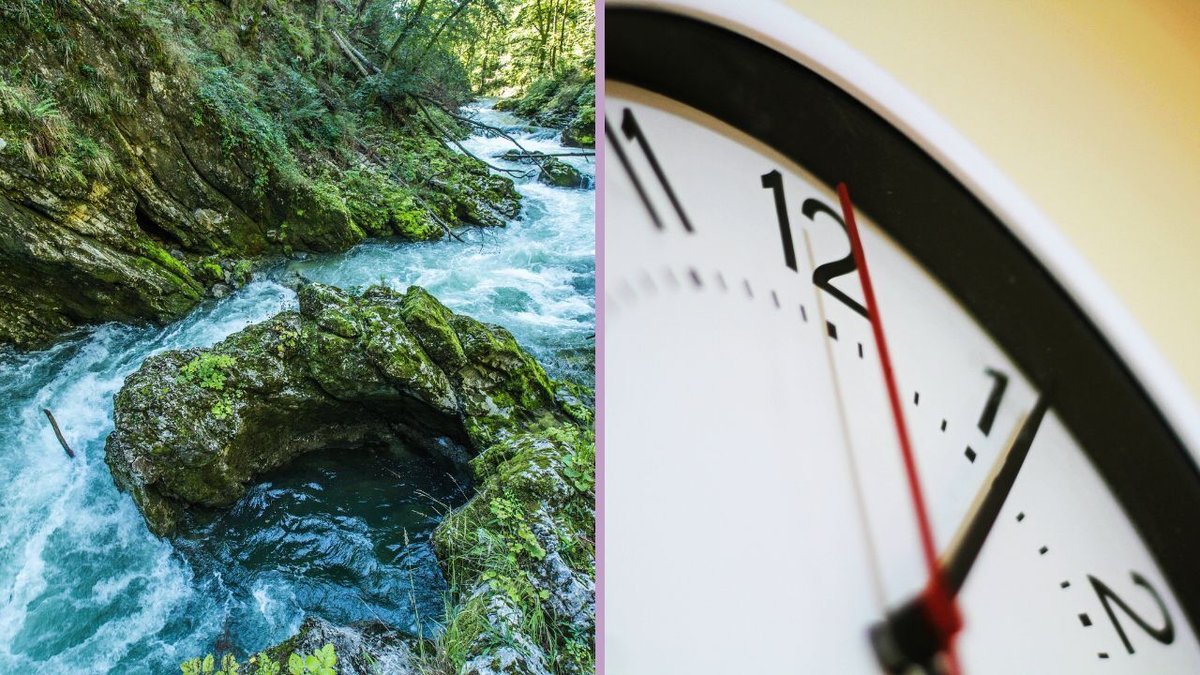
#10 Time Through Metaphors Part1
Since "time" is an invisible, abstract concept, both Japanese and English rely heavily on metaphors to express it. Without even realising it, we use phrases like "time passes," or "time flies," all of which compare time to something that flows like water, or something that flies swiftly like an arrow or bird. Through these metaphors, don’t we often picture time as something flowing from one point to another, like a river?
So, does time flow from the future to the past, or from the past to the future? How do you perceive it? This time, let's explore the fascinating relationship between "time" and "metaphor" together.
What is a Metaphor?
Many of you may already be familiar with the term, but let's go over it just in case. A metaphor is one type of figure of speech, alongside others like metonymy and synecdoche. Here, however, we'll focus on metaphors because time is often expressed using this form.
A metaphor is a rhetorical device based on similarity. For example, when expressing the nature of a lion through metaphor, we might say, "The lion is the king of beasts." This expression compares the lion to a king ruling over all animals, emphasising its strength and dominance. Similarly, the phrase "She is a walking dictionary" uses the characteristic of a "dictionary" to highlight her vast knowledge.

How is Time Defined in Dictionaries?
Looking up the definition of "time" in several dictionaries reveals that time can be described from various perspectives. Here are a few examples:
🔷 the indefinite continued progress of existence and events in the past, present, and future regarded as a whole.
🔷the part of existence that is measured in minutes, days, years, etc., or this process considered as a whole.
🔷the system of those sequential relations that any event has to any other, as past, present, or future; indefinite and continuous duration regarded as that in which events succeed one another.
Some definitions emphasise time as a "measurable unit," while others place importance on time as a "flow." Although time is invisible, we tend to perceive it as if it can be measured with a tool, or as if it were a fluid or object moving through space. Now, let's first explore time from the perspective of it being a "flow."

Does Time Flow from the Past to the Future or the Future to the Past?
The truth is, we perceive it both ways. While different cultures and languages may have varying interpretations, it seems that English and Japanese share a similar view of time’s flow.
The Perspective of Time Moving from the Past to the Future
This way of thinking centres around the self. Just as we might say "life is a journey," we often perceive ourselves as moving forward into the future. In this view, the future is ahead of us, and the past is behind.
In Japanese, the word "先(saki)" refers to the direction we are heading. Its opposite, "後 (ato)", points to what is behind us. These concepts are reflected in words like "先輩 (senpai, senior)" and "後輩 (kouhai, junior)", or "先進国 (senshinkoku, developed country)" and "後進国 (koushinkoku, developing country)". Here, those who are "ahead" or "advanced" are metaphorically further along in the journey toward the future.
*Nowadays, the term "後進国" is considered discriminatory, so it has been replaced with "発展途上国" (developing country).
Similarly, in English, when we talk about future plans, we say, "I’m going to…"—using the verb "go" as though we’re heading towards the future. When referring to the past, we say "look back," as if the past is something physically behind us. These expressions demonstrate how both languages use metaphors of space to describe time.

The Perspective of Time Moving from the Future to the Past
Now, let's look at time from an objective perspective. Imagine standing by the side of a river, watching water flow from upstream to downstream. In this case, the upstream water that hasn't yet reached you can be thought of as the future, while the downstream water that has already passed by represents the past. In this view, time seems to flow from the future towards the past. Doesn’t it feel like the future is behind you, while the past lies ahead?
In this way of thinking, the usage of "先 (saki)" and "後(ato)" shifts slightly. For instance, we refer to the previous month as "先月 (sengetsu, last month)" and something that will happen in an hour as "1時間後 (ichi-jikango, in an hour)". Similarly, we use "前 (mae, front/fore)" in expressions like "前払い (mae barai, prepayment)" and "後払い (ato barai, postpayment)", where the past is seen as being in front and the future behind.
In both English and Japanese, expressions like "春がくる(spring is coming)" and "ときが流れる/経つ (time goes by)" reflect this metaphorical view of time flowing like a river, from the future towards the past.

Summary
Some of you might be wondering, "Why do words like '先' (saki), '前' (mae), or '後' (ato) represent both past and future events? It’s confusing!" Or perhaps you're curious about the reason behind these expressions. I hope this article can offer some help and make language learning more enjoyable for those of you feeling this way.
This phenomenon isn’t unique to Japanese; in fact, it’s something shared across many languages. By simply changing your perspective, these expressions start to make more sense, and once you understand that, learning becomes much more fun! Let's continue to explore and enjoy studying the languages passed down through generations together!
Thank you for reading!
この記事が気に入ったらサポートをしてみませんか?
